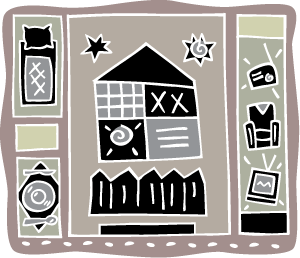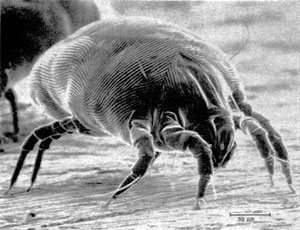Update: 22 November 2024
Healthy Home
Author: Julie Casper, C. Ac.
Most of us spend most of our time in an indoor environment. Since 1973 the focus has been on energy-efficient, air-tight homes. During this time, a number of industries have successfully introduced thousands of inexpensive synthetic products that pervade our indoor and outdoor environments. More than 88,000 new man-made chemicals (now in common use) are proving to be highly toxic to human health.
Our homes, workplaces, and many of the products we use everyday are making us sick. Unfortunately, we are kept in the dark about the problem because some corporations have successfully lobbied for self-protective laws, and they deploy (dis)information campaigns that misdirect and misinform the public regarding human and environmental health issues.
The teepee is much better to live in; always clean, warm in winter, cool in summer, easy to move. The white man builds big house, costs much money, like big cage, shut sun out, can never move; always sick — Indians and animals know better how to live — Nobody can be in good health if he does not have all the time fresh air, sunshine and good water. Chief Flying Hawk, Ogalala Sioux

Our life depends on our environment, yet we continue to degrade it. We extract natural resources at an exponential rate, and return increasing amounts of toxicity. Self-destruction is not the way to a better future, and you can be an important part of the change. Creating a ‘healthy home’ for your family is the best way to begin. Challenging, but not impossible. We can educate ourselves and learn about solutions (and there are many). We can implement changes in what we purchase, and how we live.
Politicians tell us that our grandchildren will have to pay for our national deficit selfishness, "play now, pay later." But the price for environmental degradation is being paid now. We are all paying the consequences, and they are are severe. Health problems of all kinds plague us, many are reaching epidemic levels. Medical bills prompt more than 60 percent of U.S. bankruptcies. We have no more time to debate. Change is possible right now. It is up to each individual to choose. Only collective personal action will resolve this titanic problem.
In his address to the National Congress, Xi Jinping called for an Ecological Civilization that ensures harmony between human and nature. We, as human beings, must respect nature, follow its ways and protect it. Xi stated that his administration will, encourage simple, moderate, green and low-carbon ways of life, and oppose extravagance and excessive consumption. Xi Jinping, Paramount Leader of China, General Secretary Communist Party, China
The best place to change the world begins is at home!
The average North American spends 90% of life indoors. Knowing this, our homes should reflect our deepest values, enhance our health, and represent a sanctuary of well-being. The sad fact is, our homes are overflowing with toxic chemicals. Our homes and places of work are making us all very ill. We should start at home and work to decontaminate our immediate, most personal environment.
What is the Environmental "Protection" Agency protecting?
Many people believe that common home and lawn pesticides are "safe." And that government environmental regulators are working to protect them, we assume that pesticide toxicity is scientifically tested, that if ‘used as instructed’ they are safe, and that they certainly would not be on the market if they were unsafe. All of these assumptions are incorrect. EPA registration in fact, does not signify safety, because the EPA approves pesticides based on efficacy, not safety. If it kills the target pest - APPROVED! Hundreds (if not thousands) of chemicals are registered with the EPA and fewer than one dozen have been adequately tested for safety. So called "inert" ingredients can account for up to 99% of a pesticide, yet they are not required to be listed on labels, so usually companies don't.
The Trade Secrets Act protects corporations from disclosure requirements even if their products are hazardous to health. No studies are required for "inert" ingredients, even though many of these chemicals are more toxic than the 'active' ingredient. Warning labels apply only to active ingredients. In a recent Freedom of Information lawsuit, The Northwest Coalition for Alternatives to Pesticides obtained a list of 1,400 inert ingredients currently used in pesticides. These included hazardous waste (e.g., Chicago sludge), asbestos, and even banned chemicals, including DDT. Combinations of these ingredients can make them 1,600 times more potent. For instance, the common pesticide combination of pyrethroids with PBO (piperonyl butoxide) is deadly to insects because PBO potentiates the pyrethroid by destroying one of the enzymes in the detoxification pathway. Humans exposed to this same combination suffer impaired ability of the liver to metabolize toxins in the environment.
Chemicals are the tip of the toxic iceberg. EMFs are a concern as well.
How to Make Your Home Healthy
There are five main categories of toxic indoor pollution. Eliminate these poisonous toxins from your home. If you can not eliminate them, reduce your exposure and mitigate their impact.
- VOC emissions (Volatile Organic Compounds)
- Toxic by products of combustion
- Pesticides (all biocides)
- EMR (Electro and Magnetic Radiation)
- Natural pollutants
How you can start improving your health immediately
Here are a few simple examples:
- Have a NO SHOES policy.
- Shoes track in a surprising number of unhealthy substances including pesticides (and other biocides), dust and dirt, molds, and undesirable bacteria.
- Remove all toxic cleaning products.
- Making your home a clean and healthy place should be enjoyable and rewarding, it should not harm your health. To avoid exposures to toxic chemicals use natural non-toxic cleaning products, like vinegar and bon ami. They are much less expensive and, work better.
- Use a true HEPA filtered vacuum cleaner.
- HEPA vacuums pick up tiny particulate matter such as dust-mite feces and mold spores. Typical vacuum cleaners spew dust into circulation, creating more ambient dust than was there before cleaning.
- Do not use lawn care products.
- Most lawn care products or extremely toxic (e.g., weed n' feed, round-up, etc.). They are especially harmful to pets and children because of their proximity to the ground. And they are environmentally destructive.
- Eliminate or mitigate EMF exposures. These include mobile phones and other portable wi-fi devices, cordless phones, microwave ovens, electric alarm clocks near your head at night, "smart" meters, power transmission lines, etc.
- Detoxify your bedroom, and replace your bed.
-
We spend up to 1/3 of our lives sleeping, detoxifying your home should begin in the bedroom. The ideal bed is supported by a real wood frame (unfinished or finished with a non-toxic product). For a longer product life and easier maintenance, the bed itself should contain layers, preferably made of organic materials.

Dust mites feed on organic detritus such as flakes of shed human skin. Dust mites are a common cause of asthma and allergic symptoms. Potent digestive enzymes in their feces and are major inducers of allergic reactions.
Three components of an ideal non-toxic (layered) mattress
- Natural mattress. Natural mattress materials include organic cotton, wool and latex. Latex is very expensive. You can find combinations of these materials or use just one kind.
- Wool topper (1-1/2 to 3 inches thick). A wool topper can easily be put out in the sun annually to kill dust mites.
- Wool mattress pad/cover (washable) Use to wrap the mattress and topper. Washability helps control dust mites and removes their feces. Dust mite feces contain enzymes that can cause allergic reactions in humans.
Resources
- Prescriptions for A Healthy House **** Paula Baker-La porte
- Green Housekeeping ****
- Vinegar Institute Cleaning tips with vinegar
- Bon Ami (excellent cleaning powder, 150 year old recipe)
- The International Institute for Bau-biologie® and Ecology
- Healthy Building Environmental Learning Center (videos)
- How to Go Green: In the Kitchen
- Guide to Healthy Cleaning
- Baking Soda, Peroxide, Vinegar...WOW! Natural, non-toxic, all-purpose miracle cleaner
- Environmental Illness · Introduction
- EMFs in Your Home – Protection Tips Lloyd Burrell
- The Hidden Danger of the Aeolian Plankton Includes tips to reduce the risk from poor indoor air quality.
- National Library of Medicine (NLM) Household Products Database Learn more about household cleaning product ingredients and potential health effects.
- Stain Solutions University of Illinois Extension
- Healthy Homes U.S. Centers for Disease Control and Prevention (CDC)
- Healthy Buildings, Healthy People U.S. Environmental Protection Agency (EPA)